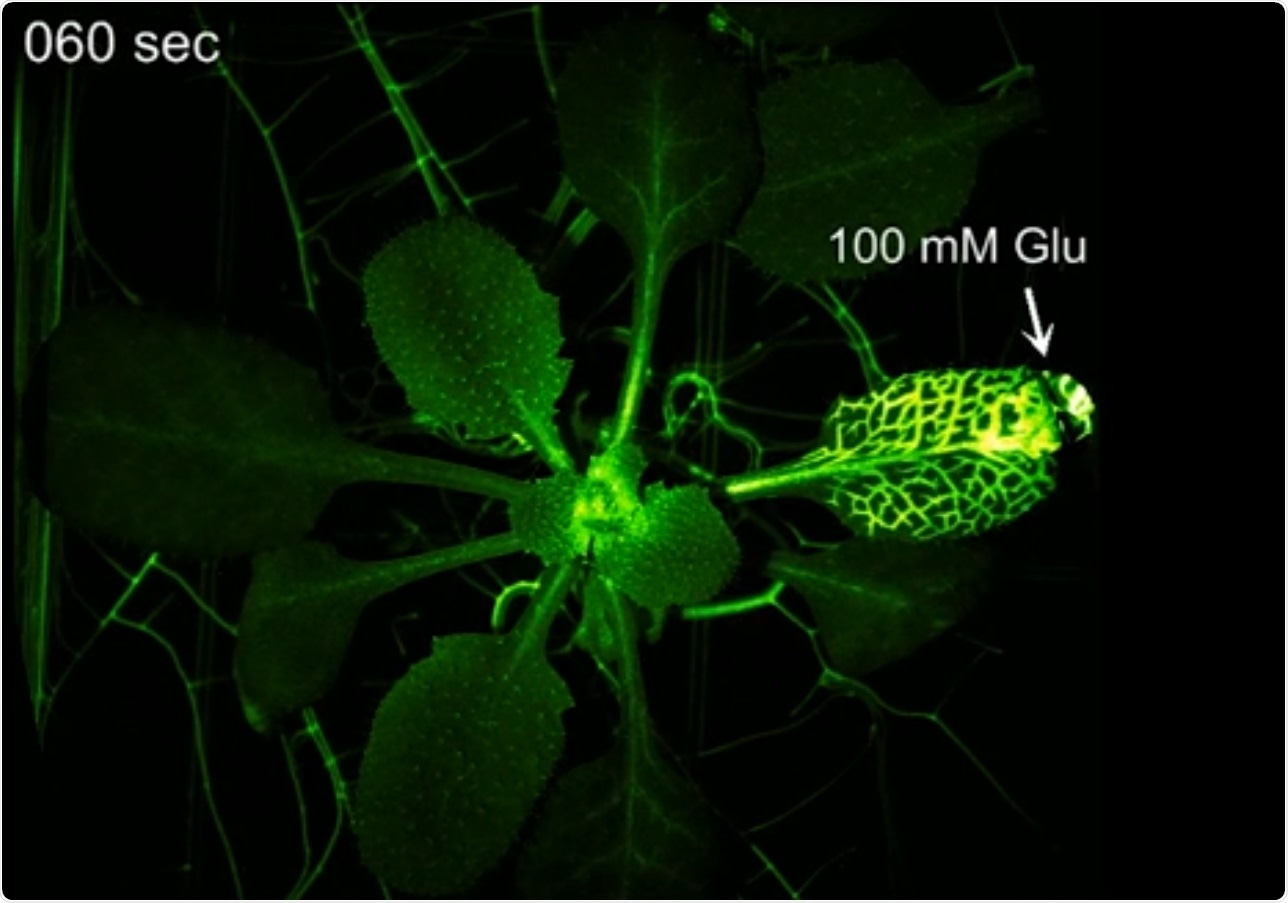Researchers at the University of Wisconsin-Madison have developed fluorescing plants and videoed them to find out how the plants defend against attack.

When a leaf was severed from the rest of the plant by a caterpillar, one video showed fluorescent light moving across the plant to reach other leaves.
The fluorescent light was tracking a wave of calcium that is activated when the plant is damaged. This calcium wave provides an electrical and chemical signal to the rest of the plant to “warn” it that there is a threat.
Using more than a dozen of these videos to study the communications systems within plants, Masatsugu Toyota and colleague Simon Gilroy showed how this calcium signaling is triggered by the neurotransmitter glutamate.
The researchers already knew that when a plant is wounded in one place, a systemic signaling system is activated to trigger the plant’s defense responses. However, they did know what was behind the system.
"We do know that if you wound a leaf, you get an electrical charge, and you get a propagation that moves across the plant. What triggered that electric charge, and how it moved throughout the plant, were unknown,” says Gilroy.
Calcium was one candidate, since it is known that calcium often provides signals when changes occur in the cellular environment. It is also known that because calcium carries a charge, it has the ability to generate an electrical signal.
The team therefore developed a way of tracking the presence and concentration of calcium in real-time. They created plants that produce a protein that only fluoresces around calcium and videoed the plants after introducing caterpillars that would bite and wound the leaves.
In response to the damage, the plants lit up as calcium quickly flowed from damaged leaves to other leaves. The signal spread quickly (at about one mm per second) and had reached other leaves in just a couple of minutes. In just a few more minutes, the concentration of defense-related hormones had spiked in distant leaves. Such hormones help the plant prepare for attack by, for example, increasing the production of chemicals that deter predators.
Previous research has already shown that the defense -related signaling is dependent on glutamate receptors and that plants engineered to have no glutamate receptors lost their ability to generate the electrical response to damage.
Toyota and Gilroy therefore decided to video the calcium flow in these mutant plants when they were damaged.
"Lo and behold, the mutants that knock out the electrical signaling completely knock out the calcium signaling as well," says Gilroy.
The finding suggests that glutamate produced at the sites of damage triggers the flow of calcium across the plant.
Gilroy says that in addition to helping connect the decades of research studying how plants prepare for attack, the videos enabled them to see the flurry of activity within plants that is normally invisible: "Without the imaging and seeing it all play out in front of you, it never really got driven home -- man, this stuff is fast!"
Source: https://eurekalert.org/pub_releases/2018-09/uow-bol090718.php